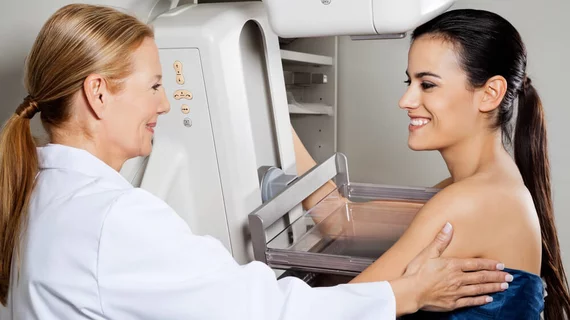Breast density assessments using digital breast tomosynthesis (DBT) and synthetic mammography (SM) vary significantly compared to those performed using standard digital mammography (DM), according to a new study published by Radiology.
The authors examined data from more than 24,000 women who underwent mammographic breast cancer screening at the Hospital of the University of Pennsylvania (HUP) in Philadelphia between 2010 and 2017. Of the more than 60,000 examinations, 14.7 percent were performed using DM only, and 50.7 percent were performed using DM and DBT together. The final 34.6 percent were performed with SM and DBT together.
Studying the data, the researchers noted that the screening method used played a big role in the final breast density assessment. The odds of a high-density breast density assessment, for example, were reduced by 31 percent when DM and DBT were used together instead of just DM on its own. The odds were reduced by 57 percent when SM and DBT were used together.
Also, the patient’s ethnicity and body mass index (BMI) were both found to be associated with such variance.
“We observed an overall trend of downgraded breast density when imaging was performed with either DM/DBT or SM/DBT compared with DM alone,” lead author Aimilia Gastounioti, PhD, from the radiology department at HUP, said in a prepared statement. “These effects were more prominent among African-American women and women with higher BMI.”
These study results, Gastounioti explained in the same statement, could be useful for researchers and specialists organizing breast cancer screening programs in the future.
“Our findings may have direct implications for personalized screening since breast density assignments, which often drive recommendations for supplemental screening, may vary greatly by modality, race and BMI,” she said.

